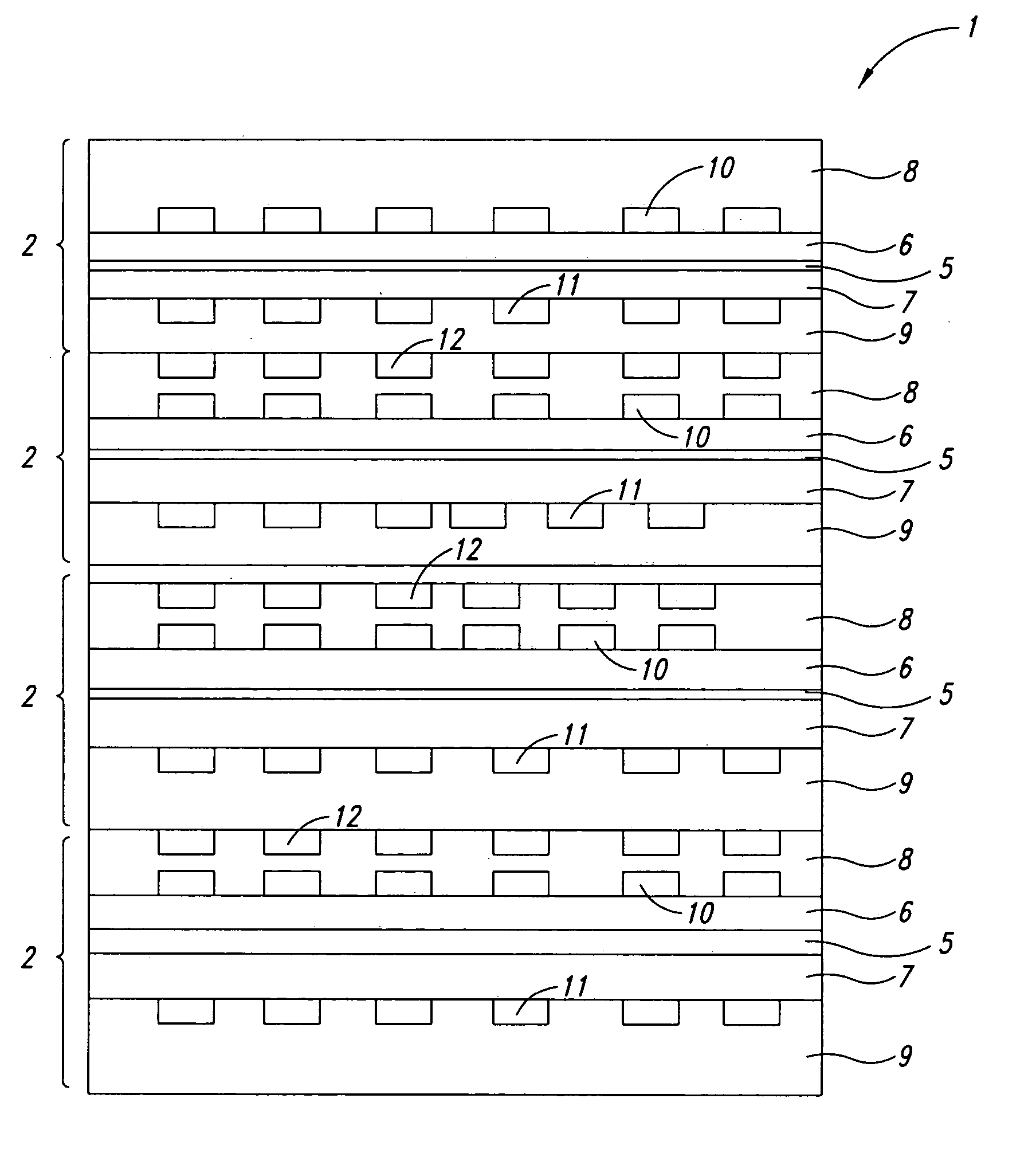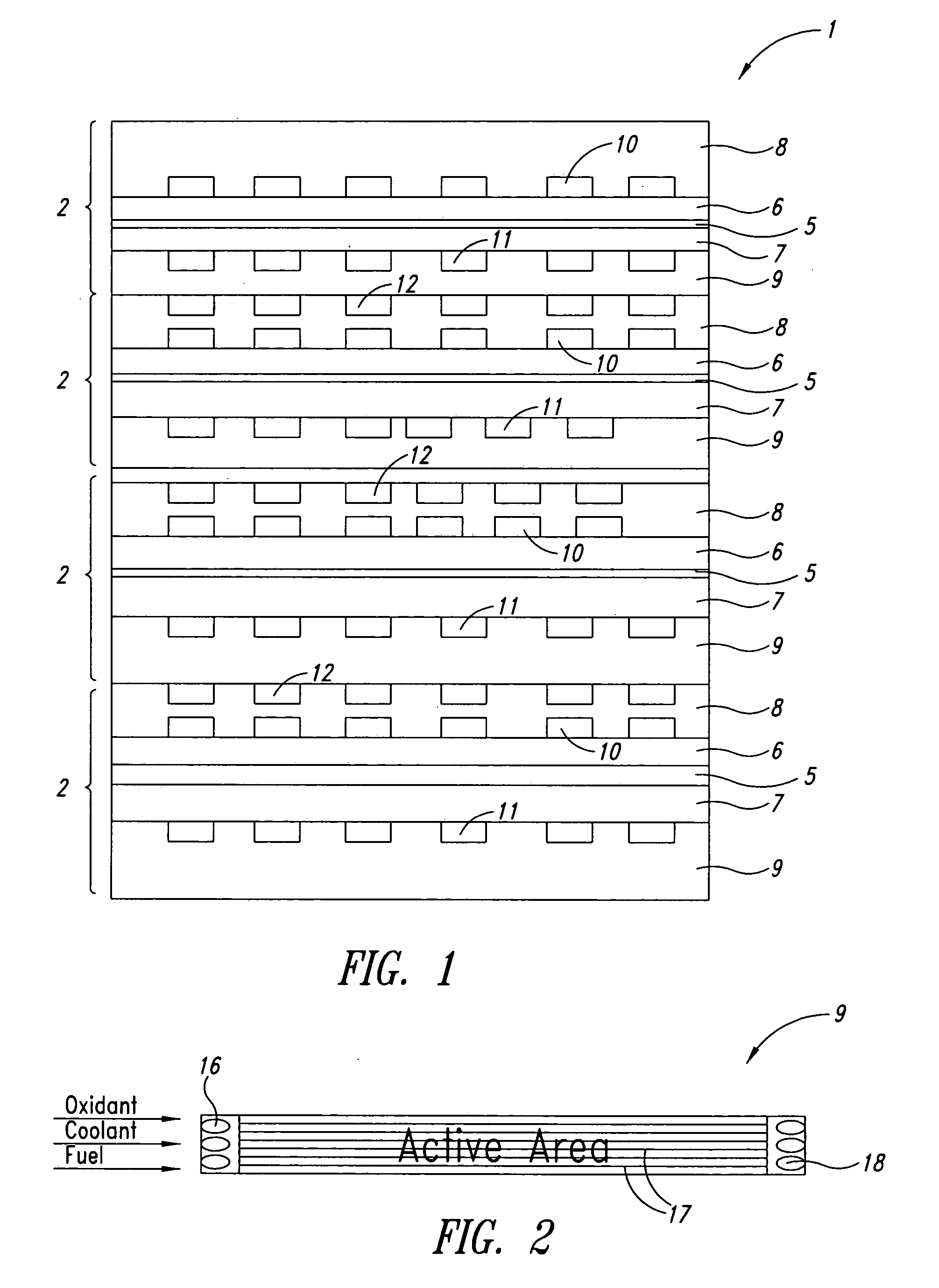Summer and winter mode operation of fuel cell stacks
a fuel cell and winter mode technology, applied in the field of summer and winter mode operation of fuel cell stacks, can solve the problem of small performance penalty associated with winter mode during normal operation, and achieve the effect of maximizing cell performance during normal operation, small performance penalty, and quick removal of water
- Summary
- Abstract
- Description
- Claims
- Application Information
AI Technical Summary
Benefits of technology
Problems solved by technology
Method used
Image
Examples
example 1
[0054] In the following, the fuel cell being considered was a solid polymer electrolyte fuel cell designed for use in an 100 kW automobile engine stack. The flow field plate design was similar to that shown in FIG. 2 in which both fuel (hydrogen) and oxidant (air) reactants as well as coolant (antifreeze solution) were distributed via a series of straight, parallel flow channels and in which both reactant flows and coolant flow were co-flow.
[0055] For optimum performance of this fuel cell during normal operation, the set of operating parameters shown in Table 1 was used. Note that different values were employed for different electrical loads. Table 1 lists values for three illustrative load points (maximum load of 400 A, partial load of 240 A, and a minimum idle load of 2 A). The relative humidity versus oxidant channel length profiles for this cell at these three loads were calculated using the above model and are plotted in FIGS. 3a, 3b, and 3c (for 400 A, 240 A and 2 A loads res...
example 2
[0061] In this Example, a fuel cell with a serpentine oxidant reactant flow field undergoing the same winter mode operating conditions was modelled. Again, the fuel cell being considered was a solid polymer electrolyte fuel cell designed for use in an 100 kW automobile engine stack. However, this time the oxidant flow field design was that depicted in FIG. 7. The flow of oxidant in this Figure initially is from left to right (1st leg), then right to left (2nd leg), and finally left to right again (3rd leg). Coolant flow was linear however and always left to right. Thus, the oxidant and coolant flows are co-flow in the 1 st and 3rd legs and counter flow in the 2nd leg.
[0062] The relative humidity versus length profile for this cell can also be calculated using the model above. However, the temperature gradient goes in the opposite direction for the 2nd leg as compared to the 1st and 3rd legs. The temperature versus oxidant channel length profile thus has a zigzag shape and so does t...
PUM
| Property | Measurement | Unit |
|---|---|---|
| output voltage | aaaaa | aaaaa |
| RH | aaaaa | aaaaa |
| pressure drop | aaaaa | aaaaa |
Abstract
Description
Claims
Application Information
 Login to View More
Login to View More - R&D
- Intellectual Property
- Life Sciences
- Materials
- Tech Scout
- Unparalleled Data Quality
- Higher Quality Content
- 60% Fewer Hallucinations
Browse by: Latest US Patents, China's latest patents, Technical Efficacy Thesaurus, Application Domain, Technology Topic, Popular Technical Reports.
© 2025 PatSnap. All rights reserved.Legal|Privacy policy|Modern Slavery Act Transparency Statement|Sitemap|About US| Contact US: help@patsnap.com



